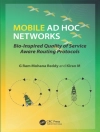Since publication of the first edition of Computer Relaying for
Power Systems in 1988, computer relays have been widely
accepted by power engineers throughout the world and in many
countries they are now the protective devices of choice.
The authors have updated this new edition with the latest
developments in technology and applications such as adaptive
relaying, wide area measurements, signal processing, new GPS-based
measurement techniques and the application of artificial
intelligence to digital relays. New material also includes
sigma-delta and oversampling A/D converters, self-polarizing and
cross-polarizing in transmission lines protection and optical
current and voltage transformers.
Phadke and Thorp have been working together in power systems
engineering for more than 30 years. Their impressive work in the
field has been recognized by numerous awards, including the
prestigious 2008 Benjamin Franklin Medal in Electrical
Engineering for their pioneering contributions to the
development and application of microprocessor controllers in
electric power systems.
* Provides the student with an understanding of computer
relaying
* Authored by international authorities in computer relaying
* Contents include relaying practices, mathematical basis for
protective relaying algorithms, transmission line relaying,
protection of transformers, machines and buses, hardware
organization in integrated systems, system relaying and control,
and developments in new relaying principles
* Features numerous solved examples to explain several of the
more complex topics, as well as a problem at the end of each
chapter
* Includes an updated list of references and a greatly expanded
subject index.
Cuprins
About the Authors.
Preface to the First Edition.
Preface to the Second Edition.
Glossary of Acronyms.
1 Introduction to computer relaying.
1.1 Development of computer relaying.
1.2 Historical background.
1.3 Expected benefits of computer relaying.
1.4 Computer relay architecture.
1.5 Analog to digital converters.
1.6 Anti-aliasing filters.
1.7 Substation computer hierarchy.
1.8 Summary.
Problems.
References.
2 Relaying practices.
2.1 Introduction to protection systems.
2.2 Functions of a protection system.
2.3 Protection of transmission lines.
2.4 Transformer, reactor and generator protection.
2.5 Bus protection.
2.6 Performance of current and voltage transformers.
2.7 Summary.
Problems.
References.
3 Mathematical basis for protective relaying algorithms.
3.1 Introduction.
3.2 Fourier series.
3.3 Other orthogonal expansions.
3.4 Fourier transforms.
3.5 Use of fourier transforms.
3.6 Discrete fourier transform.
3.7 Introduction to probability and random process.
3.8 Random processes.
3.9 Kalman filtering.
3.10 Summary.
Problems.
References.
4 Digital filters.
4.1 Introduction.
4.2 Discrete time systems.
4.3 Discrete time systems.
4.4 Z Transforms.
4.5 Digital filters.
4.6 Windows and windowing.
4.7 Linear phase.
4.8 Approximation – filter synthesis.
4.9 Wavelets.
4.10 Elements of artificial intelligence.
4.11 Conclusion.
Problems.
References.
5 Transmission line relaying.
5.1 Introduction.
5.2 Sources of error.
5.3 Relaying as parameter estimation.
5.4 Beyond parameter estimation.
5.5 Symmetrical component distance relay.
5.6 Newer analytic techniques.
5.7 Protection of series compensated lines.
5.8 Summary.
Problems.
References.
6 Protection of transformers, machines and buses.
6.1 Introduction.
6.2 Power transformer algorithms.
6.3 Generator protection.
6.4 Motor protection.
6.5 Digital bus protection.
6.6 Summary.
Problems.
References.
7 Hardware organization in integrated systems.
7.1 The nature of hardware issues.
7.2 Computers for relaying.
7.3 The substation environment.
7.4 Industry environmental standards.
7.5 Countermeasures against EMI.
7.6 Supplementary equipment.
7.7 Redundancy and backup.
7.8 Servicing, training and maintenance.
7.9 Summary.
References.
8 System relaying and control.
8.1 Introduction.
8.2 Measurement of frequency and phase.
8.3 Sampling clock synchronization.
8.4 Application of phasor measurements to state estimation.
8.5 Phasor measurements in dynamic state estimation.
8.6 Monitoring.
8.7 Control applications.
8.8 Summary.
Problems.
References.
9 Relaying applications of traveling waves.
9.1 Introduction.
9.2 Traveling waves on single-phase lines.
9.3 Traveling waves on three-phase lines.
9.4 Directional wave relay.
9.5 Traveling wave distance relay.
9.6 Differential relaying with phasors.
9.7 Traveling wave differential relays.
9.8 Fault location.
9.9 Other recent developments.
9.10 Summary.
Problems.
References.
10 Wide area measurement applications.
10.1 Introduction.
10.2 Adaptive relaying.
10.3 Examples of adaptive relaying.
10.4 Wide area measurement systems (WAMS).
10.5 WAMS architecture.
10.6 WAMS based protection concepts.
10.7 Summary.
Problems.
References.
Appendix A.
Representative system data.
Transmission lines.
Transformers.
Generators.
Power system.
References.
Appendix B.
Standard sampling rates.
References.
Appendix C.
Conversion between different sampling rates.
References.
Appendix D.
Standard for transient data exchange.
References.
Index.
Despre autor
Arun Phadke is Professor of Electrical Engineering at Virginia Polytechnic Institute and State University, Blacksburg.
James S Thorp is Professor and Department Head at Virginia Polytechnic Institute and State University, Blacksburg.












